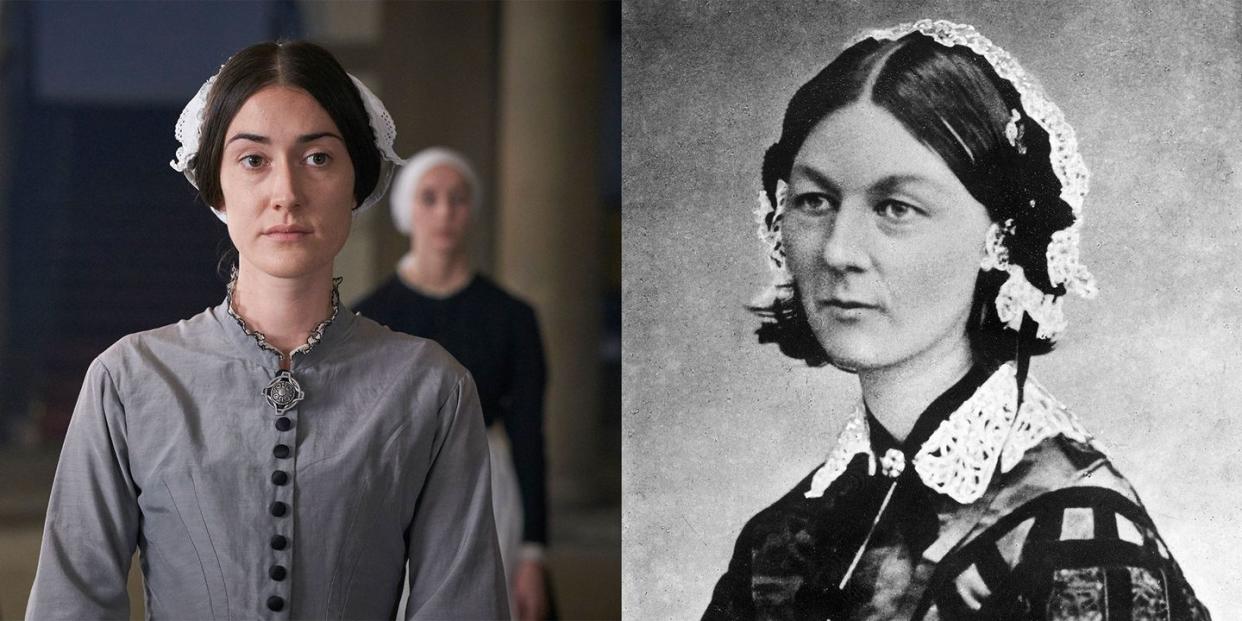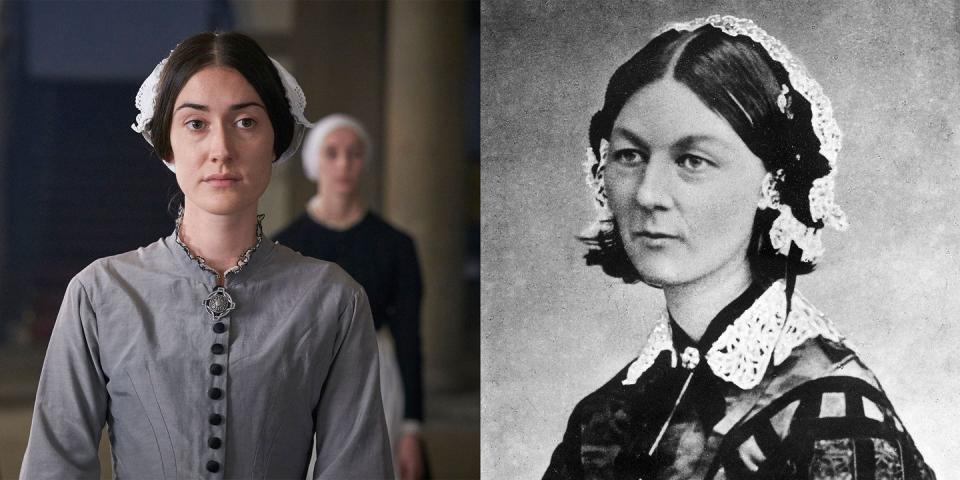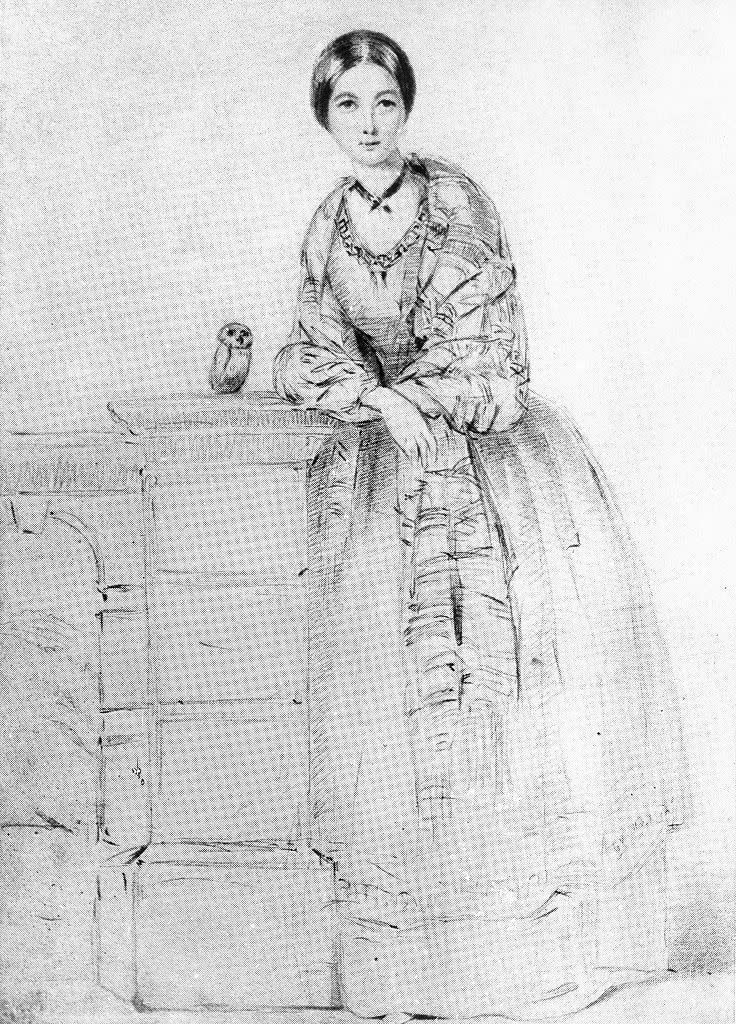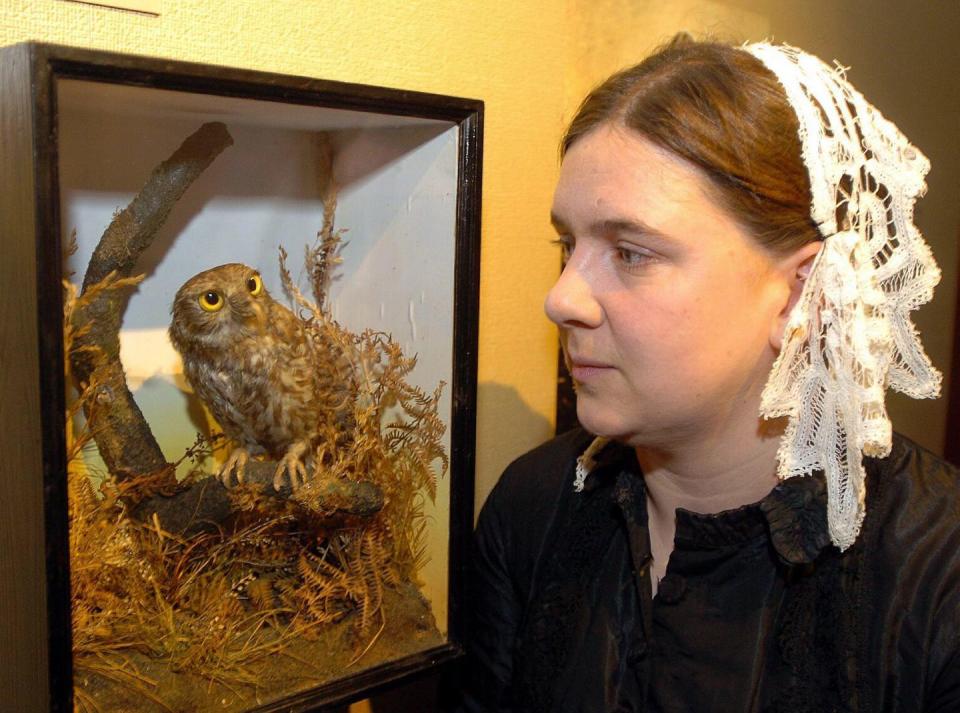Did Queen Victoria Really Meet Florence Nightingale?

Tonight's episode of Victoria on Masterpiece PBS shows the British monarch meeting a legend of modern medicine, Florence Nightingale, as a cholera epidemic rages on in London. In reality, their introduction didn't play out exactly how it's depicted on screen. Here's the real story.
Florence Nightingale and Queen Elizabeth did meet, but it wasn't exactly like on the show.

The writers are playing with time a bit to suit the story this season. Generally speaking, Victoria and Albert appear to be in 1848 or possibly 1849, but there are a few exceptions to that established timeline. In this week's episode, for example, Prince Albert is being elected Chancellor of the University of Cambridge, a vote which actually took place in 1847.
Furthermore, the plot of "Foreign Bodies" seemingly centers around the Soho cholera outbreak of 1854 during which Dr. John Snow discovered that the illness was spread by contaminated water. On the show, Victoria visits a women's and children's hospital to see the sickness firsthand, and it is there that she's introduced to Nightingale.
But in reality, the two women wouldn't meet until after Nightingale's service in the Crimean War. In November of 1854, Nightingale arrived with several dozen nurses at the British Army's Barracks Hospital in Scutari, Turkey to care for sick and injured soldiers. Immediately, she set to work on improving the unsanitary conditions, which were killing men, and over the course of the war, Nightingale visited military hospitals across Europe, helping to improve horrible conditions, and greatly reducing the death rate of those injured. She would eventually become known as "the Lady with the Lamp," as she often cared for the wounded at night, with a lantern in hand, or, more simply, "the Angel of the Crimea."
According to the Royal Collection Trust, during the war, "Queen Victoria was anxious to hear of the state of the soldiers and requested details from Miss Nightingale’s reports."
They maintained a correspondence, with Victoria even writing to Nightingale of her intention for them to meet. "It will be a very great satisfaction to me, when you return at last to these shores, to make the acquaintance of one who has set so bright an example to our sex," the Queen wrote in 1856. And in that same mailing, Victoria included a brooch in honor of Nightingale's service to the military.
According to the British National Army Museum, the piece, which is sometimes called the "Nightingale Jewel," is thought to have been designed by Prince Albert, and is engraved with a message from the Queen. "To Miss Florence Nightingale, as a mark of esteem and gratitude for her devotion towards the Queen's brave soldiers, from Victoria R. 1855."
The museum also clarifies that "the brooch was not intended to serve merely as a piece of jewellery, but rather, in the absence of a medal or established decoration suitable for presentation to such a female civilian, it stood as a badge of royal appreciation."
After the war, Victoria wanted to hear "a first-hand account" of Nightingale's experiences working with soldiers and invited her to Balmoral.
Per the Royal Collection Trust, "The Queen and Prince Albert were persuaded by her of the need for reform of the military hospital system and on 5 May 1857 a Royal Warrant was issued for a commission to enquire into the health of the army." It was only one of Nightingale's many impacts on international healthcare reform during the Victorian Era.
Did Florence Nightingale have a pet owl?

One of the more peculiar things about the famous nurse in this episode of Victoria is that she has a pet owl. But sometimes the truth is stranger than fiction. Nightingale did indeed rescue an owl from some children who were tormenting the animal at the Parthenon in Athens, Greece. She named the bird Athena, and it became her companion, often traveling with Nightingale in her apron pocket.
Nightingale's sister Parthenope even wrote a book about the animal called Life and Death of Athena, an Owlet from the Parthenon.
And when Athena died (seemingly due to neglect when Nightingale left her pet with relatives), Nightingale was so upset, she had the bird preserved by a taxidermist. It is now in the collection of the Florence Nightingale Museum at St. Thomas' Hospital in London.

('You Might Also Like',)

